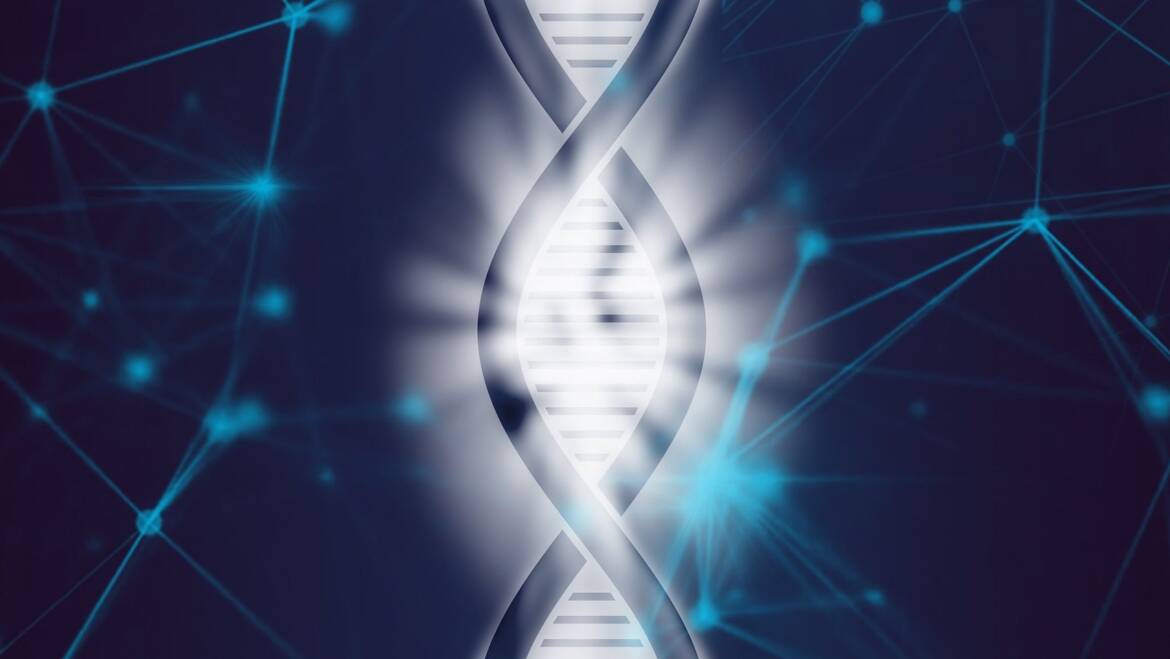We all want to be healthy. From diets to gym memberships, vitamins to CBD supplements, we each search for a path to health that seems manageable to us. And still, marathon runners are getting cancer. People who have sworn off alcohol are getting liver disease.
What’s going on here, and what can you do about it?
Many factors weave together to create health. To understand how to cultivate the healthiest you that you can be, we must first take a look at the underlying causes of one of the most common enemies to health: disease.
The Deadliest Diseases
A disease is defined as “a disorder of structure or function in a human, animal, or plant” (Oxford dictionary). It is the absence of the natural state of ease in which our bodies are meant to function. That’s why the natural health community often hyphenates the word to “dis-ease”. A disease is not some evil force that makes you its victim; it’s just the absence of normal, healthy functioning. The absence of ease. By that understanding, we can better acknowledge that ease can be restored.
Before we get to the how, let’s look at the what and the why.
Diabetes
In 2019, almost half a billion adults were living with diabetes. This number continues to climb. Diabetes is the seventh leading cause of death in the United States and contributes to death from heart disease (the first leading cause of death) and stroke (the fifth leading cause). Type 2 diabetes is preventable and influenced largely by lifestyle choices. Smoking, physical inactivity, poor diet, high blood pressure, and obesity all increase your risk. But there is one substance that can increase your risk dramatically, and its hidden in almost everything.
Diabetes occurs when your blood sugar (glucose) is too high. Your cells need glucose to create energy, but too much of it leads to a plethora of health problems. To help offset this, your pancreas creates insulin. Insulin essentially moves the glucose out of your blood and into cells to be converted into energy. But sometimes your body doesn’t make enough insulin to handle all the blood sugar. Some peoples’ bodies can’t create any insulin at all, which is the case in Type 1 diabetes. The exact cause of Type 1 diabetes is still unknown, but type 2, which is by far the most common, is caused when the body’s cells stop responding well to insulin. Most often this is due to chronically high blood sugar levels corrupting the body’s sensitivity to insulin.
Heart Disease
Heart disease is the number one killer in the world. In the Unites States alone, over 647,000 people die from it every single year. Heart disease includes coronary artery disease and heart attacks. Coronary artery disease occurs when plaque builds up in the arteries that supply blood to the heart, which narrows the passage and prevents the heart from getting the blood it needs. Over time, this weakens the heart and can cause its failure. A heart attack usually comes first.
Heart attacks are often, but not always, a symptom of coronary artery disease. They happen when part of the heart isn’t getting enough blood flow, therefore plaque build-up in the arteries is a major contributor. A less common cause is when the coronary arteries experience a sudden contraction, or spasm. People can recover from heart attacks if medical attention is prompt. The longer the heart goes without its full blood supply, the less likely it is to recover. If you suspect you or a loved one is experiencing a heart attack, call 9-1-1 immediately.
Not surprisingly, the risk of heart disease is influenced by many of the same factors that contribute to diabetes. Smoking, lack of physical activity, high blood pressure, high blood cholesterol, and unmanaged blood sugar are all major causes. High levels of inflammation in the body also contribute. Then there’s stress, unhealthy diet, and alcohol. Combining several of these factors puts you most at risk.

Cancer
Over 600,000 people die in the United States every year from cancer, making it the second leading cause of death. Cancer occurs when damage to our DNA builds up over time. DNA tells our cells what to do and essentially forms the blueprint of our body. In most cases, you get about half your DNA from your mother and half from your father. Risk for cancer is therefore linked to genetics, but it is not the only factor.
Just because you carry the gene for a particular trait or disease does not mean that gene will become activated. Genes are activated due to a complex interaction of environmental factors and internal factors. Inherited genetic mutations actually only account for about 5-10% of all cancers. This suggests that many cases of cancer can be avoided. Cancer happens when normal cells get confused and start mutating in ways that are ultimately detrimental. Some causes, such as smoking tobacco, are obvious. Tobacco smoke contains over 6,000 different chemicals and is clearly not something the body is designed to be inhaling. The alarmingly high rates of cancer we see today are largely due to the toxicity of the world we live in and the habits our culture participates in.
Some carcinogens, which is the word given to cancer-causing substances, are not as obvious as cigarettes. For example, meats such as bacon, sausage, and ham rank as some of the most deadly cancer-causing substances right alongside tobacco smoke. The International Agency for Research on Cancer reported that each 50-gram (1.8oz) portion of processed meat eaten daily increases your risk of colorectal cancer by 18%. There are also carcinogens in wood dust, certain paints, certain pharmaceuticals, exhaust fumes, and so much more.
And then there’s blood sugar. A spike in blood sugar releases insulin-like growth factor (IGF), which has been shown to help cancer cells grow. And when fighting cancer, or simply trying to avoid it, the last thing you want is to be helping cancer cells grow.
Why is there all this disease?
Despite constantly-advancing medical technology, disease is still all around us. New diseases show up and diagnoses abound. Pharmaceuticals can help relieve symptoms and sometimes even cure certain conditions, but for real ease to be restored, slapping a bandaid on or popping a pill every day isn’t enough. Instead of dealing only with the symptoms, you have to look deeper, at the root cause, and be willing to adjust.
In almost every case, the root cause has something to do with humanity’s divide from nature. Our bodies are wild animals that we have forced to live in a very unnatural world. Instead of running through the trees, we sit in front of screens all day. We breathe pollutants and inhale chemicals into our lungs. We eat processed food that is laden with chemicals we don’t even know the names of, and we gorge ourselves on sugar. A couple hundred years ago it was impossible for us to access even half as much sugar as we can today. Sugar heaps around us as an additive to almost everything and lures us to consume more and more of it. It’s addictive, it’s everywhere, and it’s deadly.
There are a few common links between the major diseases mentioned above, but one in particular stands out. Blood sugar.
Blood Sugar and Glycemic Index
Chronically high blood sugar causes diabetes, heart disease, cancer, depression, acne, joint and bone problems, cognitive decline, kidney disease, and more. It’s a silent killer that is all-too-often overlooked. Avoiding high blood sugar isn’t as simple as taking your tea without sweetener or avoiding doughnuts. In order to maintain healthy blood sugar levels, you’ve got to become mindful about everything you eat and drink.
The body breaks down all carbohydrates into glucose. Sugar is the word for sweet-tasting, soluble carbohydrates. While carbohydrates are an important source of energy for the body, not all of them are equal. The American Heart Association recommends no more than about 25 grams of sugar per day, yet most Americans eat about 72 grams a day. One can of soda has about 39 grams of sugar. Two slices of dried mango have about 40 grams of sugar. The difference between the sugar in these two examples is that mango is packed full of fiber and nutrients, whereas soda is not. The fiber allows the body to digest the mango more slowly, which results in a lower spike in blood sugar.
Glycemic index is a value assigned to carbohydrates that refers to how quickly or slowly they are digested by the body. Foods with a high glycemic index are digested very quickly and therefore cause spikes in blood sugar and insulin levels. As mentioned above, chronically high blood sugar can lead to a variety of health problems, with insulin resistance being one of them. Insulin resistance leads to higher levels of inflammation in the body, and inflammation also plays a part in almost every major disease.
To read more about inflammation, please check out this blog post.
What can you do?
By eating foods with a high glycemic index (GI) along with foods that are low in GI, you can slow down digestion and prevent high levels of blood sugar. An easy way to think about it is by paying attention to the sweetness of whatever you’re eating. Sweeter foods will create more glucose in your blood, whether its a piece of candy or an over-ripe banana. You can eat a banana with steel-cut oats to balance out the high GI of the banana, because oatmeal is not naturally sweet and takes longer to digest. It’s not all about sweetness though. Starchy vegetables, such as russet potatoes, also have a high GI, despite not being necessarily sweet.

Some common foods that are high on the glycemic index (above 70) include:
Russet Potatoes
Parsnips
Watermelon
Soda Crackers
Bread
White Rice
Cereals
Doughnuts
Honey
Table Sugar
Soda
Pumpkin
Some common foods that are low on the glycemic index (under 55) include:
Steel-cut oats
Apples
Grapefruit
Blueberries
Strawberries
Hummus
Wild Rice
Almonds
Walnuts
Eggs
Brocolli
Cucumber
You can consult this list to get a better idea of what foods to eat more of and what foods to watch in order to maintain a healthy blood sugar level.
Take CBD Oil
You can also take CBD oil to help manage the inflammation caused by eating too much sugar. CBD has been shown to be a powerful anti-inflammatory, and the endocannabinoid system plays a part in managing blood sugar as well as almost all of the other physiological processes within the body.
To learn more about the endocannabinoid system, read about it here!
Conclusion
Consuming a diet rich in high-GI foods can cause cell dysfunction and increase your risk of diabetes, cancer, heart disease, and more. Low-GI foods, on the other hand, have numerous health benefits. They reduce your risk for heart disease, help you maintain a healthy weight, and help keep your cholesterol balanced. Foods with low glycemic index are less stressful on the body and help keep inflammation down.
There are certain fruits and vegetables that are high-GI but still have numerous health benefits. Pineapples and watermelons, for example. You should still eat those nutrient-dense foods, but be mindful of how much you are eating and what else you’re eating throughout the day. Try combining high-GI foods with low-GI foods to slow down digestion and balance your diet out.
Every time you eat, you are building your body. You can either build health or disease. By choosing to eat foods that maintain healthy blood sugar levels, you are giving your body an excellent chance at fending off disease. By combining that with exercise, avoidance of chemicals, and other forms of stress relief and self care, you up your odds even more.
Show your body some love; feed it foods that help it thrive.
Article by Britt Foster

Follow us on Instagram and Facebook:
@flowerchildcbd






